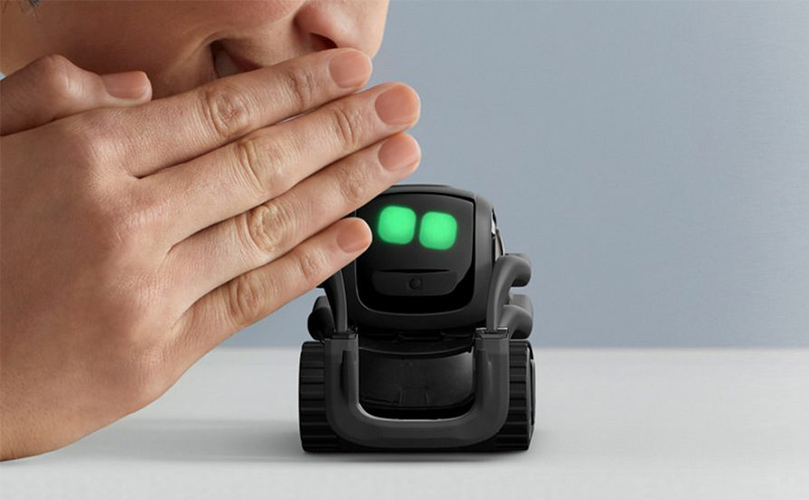
The concept of artificial general Intelligence is great, but there are some serious problems. Listed below are some of those problems, as well as possible solutions. Additionally, you will learn about limitations of AI technology and what it takes to reach AGI. Hopefully, these problems will be a useful starting point in your quest to develop a machine with an AGI. Continue reading for more information.
Problems of artificial general intelligence
There are many issues with artificial general intelligence. One concern is the ethics of its application. These algorithms are ethically designed. The algorithms will use the data provided to them to label things, no matter how accurate or inaccurate. Some algorithms currently mistakenly label black people as "gorillas", and this is completely wrong. AI systems should be ethical. They should not mislabel objects and people.
Possible solutions
AGI's potential impact on society is immense, from its ability to combat climate change to the development of new technologies. It could also make our daily lives easier, save us time, money, even our own lives. However, there is no one single solution to this problem. There are several approaches that have been explored to achieve human-like intelligence, but none has been proven to work in all cases. Here are some of the possible solutions:

One solution is to create an environment that allows narrow-AI advancements. AGI is unlikely in this century. Organizations can however take proactive steps to prepare for it. You can simplify processes, organize physical spaces and convert analog systems to digital or structured data. It can make it easier to transition from analog systems to digital and structured data. Companies can also begin to use platforming in order to develop AGI capabilities earlier.
Current AI technology limitations
There is plenty of hype about artificial general intelligence, but there are also many limitations of current AI techniques. AI has tremendous potential, but its application and use are limited. Also, ethical considerations must be considered. These issues are the subject of this Technology Quarterly Article. First, let's talk about the current limitations of AI. It is expensive and complicated to create the latest AI systems.
Most current research in AI focuses on building machines that can mimic the human mind, without focusing on contextual understanding of humans. Pre-determined scripts and thousands upon thousands of training samples are the basis of AI algorithms. They do not understand how words relate to physical objects. These limitations make it difficult for AI developers to build systems that function more like human colleagues. It is still far from being fully developed. AI researchers will work over the next decades to achieve the same level in context understanding as three-year-olds.
A Path to AGI
The Path to AGI can also be compared to the process of developing intelligence. AGI is not something that can be achieved with a human body. However, it requires a sense or reality comparable to human experience. AGI should have the ability to learn from experiences and build upon this foundation for human-like cognition. This is the question: How do we get there?

While AI research is still in an early stage of development, AI tools that are narrowly focused have been adopted by the majority of businesses and society. The path to AGI is fraught with divergent perspectives and there is no consensus among experts. However, some of the most promising ideas have begun to emerge. A detailed analysis can help us map out the path to AGI. We can also refine our techniques to increase the chances of creating intelligent machines. We will get there. But the benefits of the process will only accrue to those who plan ahead and prepare.
FAQ
Why is AI so important?
It is predicted that we will have trillions connected to the internet within 30 year. These devices will cover everything from fridges to cars. Internet of Things (IoT), which is the result of the interaction of billions of devices and internet, is what it all looks like. IoT devices will communicate with each other and share information. They will be able make their own decisions. For example, a fridge might decide whether to order more milk based on past consumption patterns.
It is expected that there will be 50 Billion IoT devices by 2025. This is an enormous opportunity for businesses. It also raises concerns about privacy and security.
How does AI function?
An artificial neural network is made up of many simple processors called neurons. Each neuron processes inputs from others neurons using mathematical operations.
Neurons can be arranged in layers. Each layer has a unique function. The first layer receives raw information like images and sounds. These data are passed to the next layer. The next layer then processes them further. The last layer finally produces an output.
Each neuron is assigned a weighting value. This value is multiplied when new input arrives and added to all other values. The neuron will fire if the result is higher than zero. It sends a signal down to the next neuron, telling it what to do.
This continues until the network's end, when the final results are achieved.
How do you think AI will affect your job?
AI will eradicate certain jobs. This includes taxi drivers, truck drivers, cashiers, factory workers, and even drivers for taxis.
AI will bring new jobs. This includes business analysts, project managers as well product designers and marketing specialists.
AI will make it easier to do current jobs. This applies to accountants, lawyers and doctors as well as teachers, nurses, engineers, and teachers.
AI will improve the efficiency of existing jobs. This includes salespeople, customer support agents, and call center agents.
What uses is AI today?
Artificial intelligence (AI), is a broad term that covers machine learning, natural language processing and expert systems. It's also known by the term smart machines.
Alan Turing created the first computer program in 1950. His interest was in computers' ability to think. In his paper "Computing Machinery and Intelligence," he proposed a test for artificial intelligence. The test asks whether a computer program is capable of having a conversation between a human and a computer.
In 1956, John McCarthy introduced the concept of artificial intelligence and coined the phrase "artificial intelligence" in his article "Artificial Intelligence."
Many AI-based technologies exist today. Some are easy to use and others more complicated. They range from voice recognition software to self-driving cars.
There are two types of AI, rule-based or statistical. Rule-based uses logic in order to make decisions. An example of this is a bank account balance. It would be calculated according to rules like: $10 minimum withdraw $5. Otherwise, deposit $1. Statistic uses statistics to make decision. A weather forecast might use historical data to predict the future.
Statistics
- That's as many of us that have been in that AI space would say, it's about 70 or 80 percent of the work. (finra.org)
- In 2019, AI adoption among large companies increased by 47% compared to 2018, according to the latest Artificial IntelligenceIndex report. (marsner.com)
- A 2021 Pew Research survey revealed that 37 percent of respondents who are more concerned than excited about AI had concerns including job loss, privacy, and AI's potential to “surpass human skills.” (builtin.com)
- According to the company's website, more than 800 financial firms use AlphaSense, including some Fortune 500 corporations. (builtin.com)
- Additionally, keeping in mind the current crisis, the AI is designed in a manner where it reduces the carbon footprint by 20-40%. (analyticsinsight.net)
External Links
How To
How to build a simple AI program
It is necessary to learn how to code to create simple AI programs. There are many programming languages to choose from, but Python is our preferred choice because of its simplicity and the abundance of online resources, like YouTube videos, courses and tutorials.
Here's how to setup a basic project called Hello World.
You'll first need to open a brand new file. For Windows, press Ctrl+N; for Macs, Command+N.
Next, type hello world into this box. Enter to save this file.
Now, press F5 to run the program.
The program should show Hello World!
However, this is just the beginning. These tutorials can help you make more advanced programs.